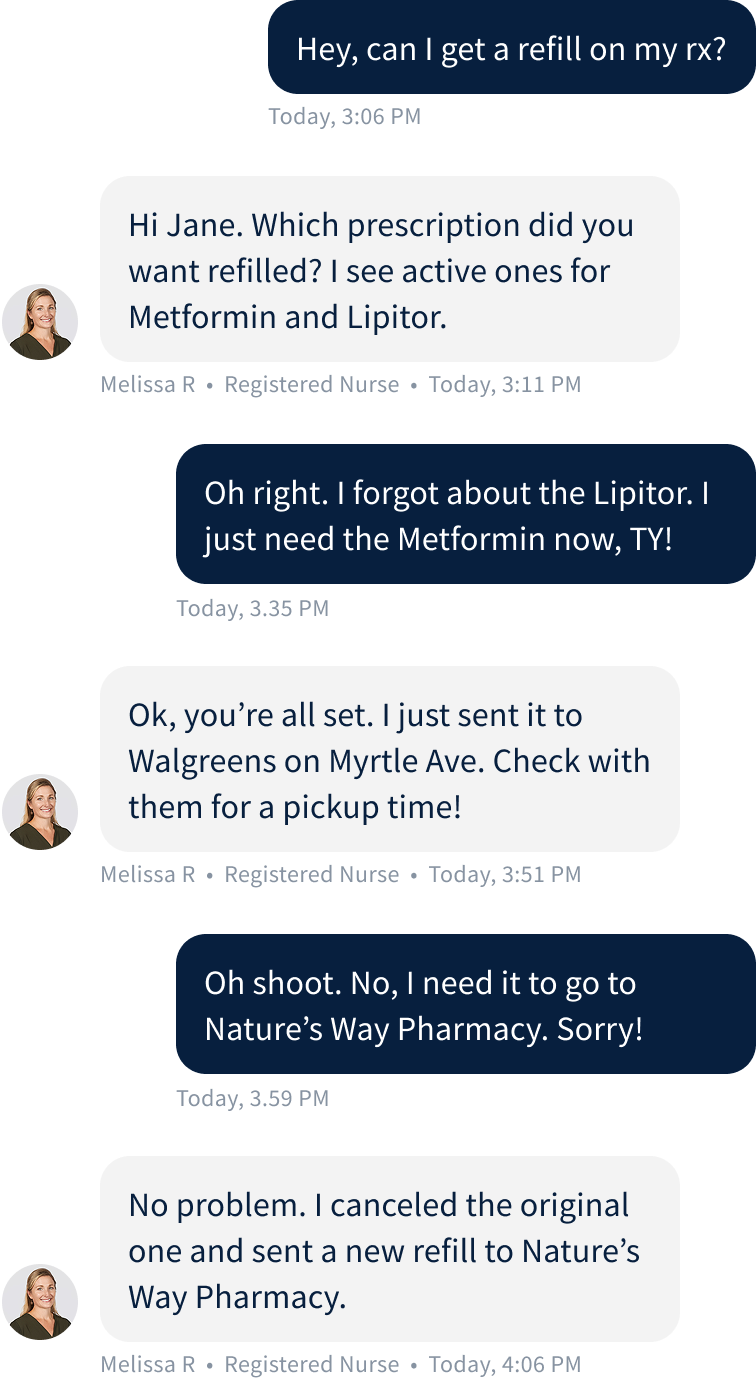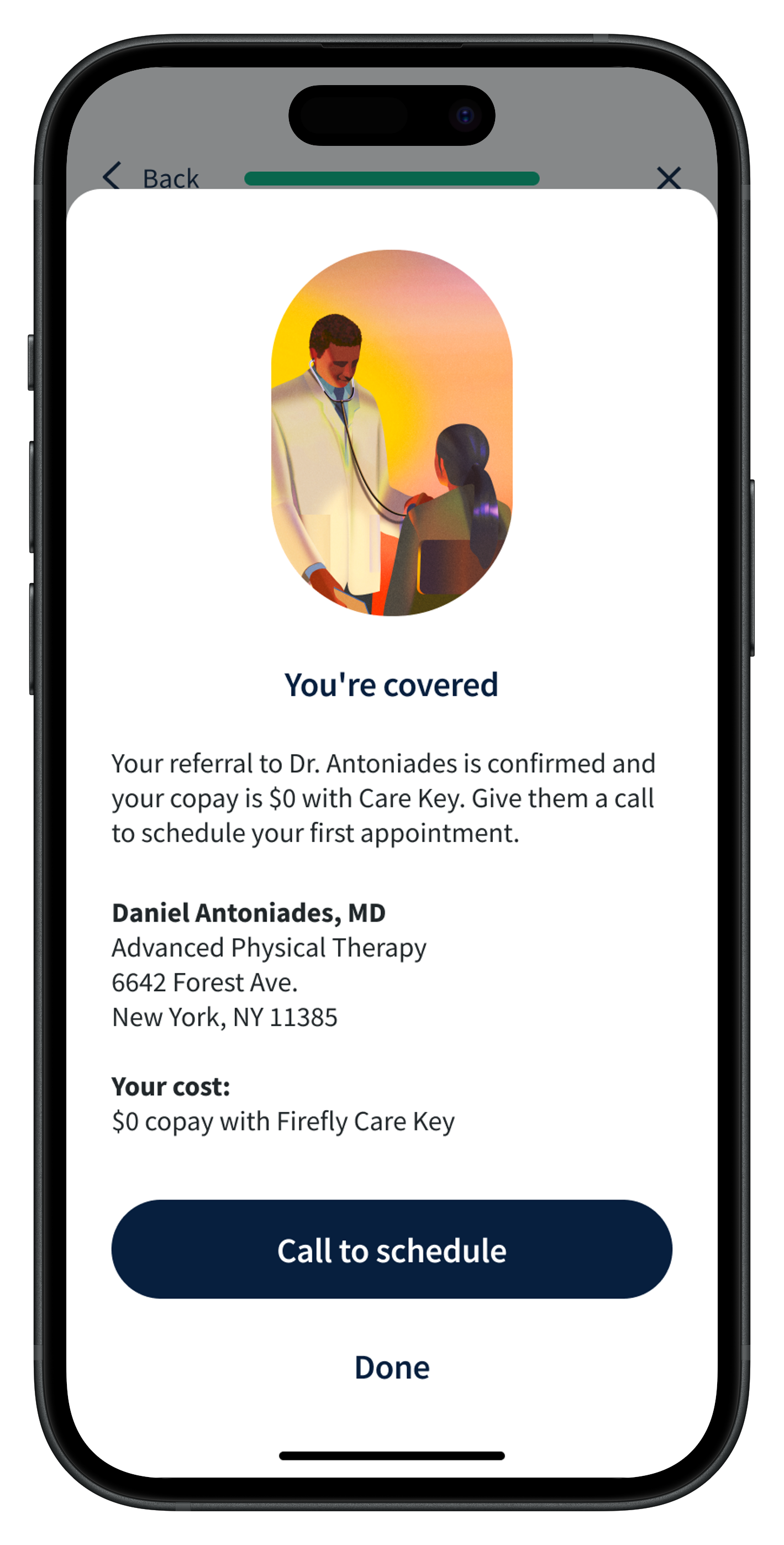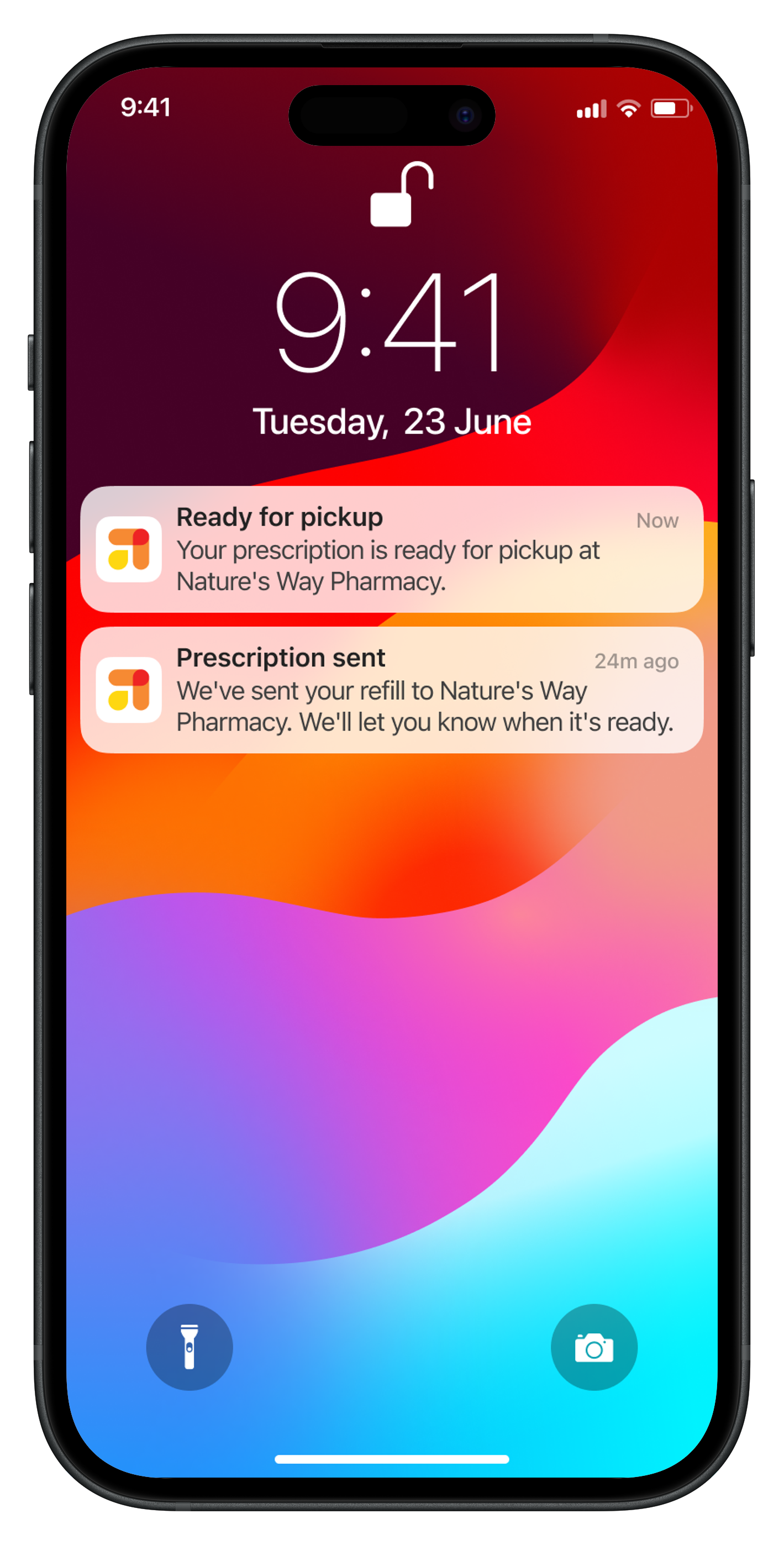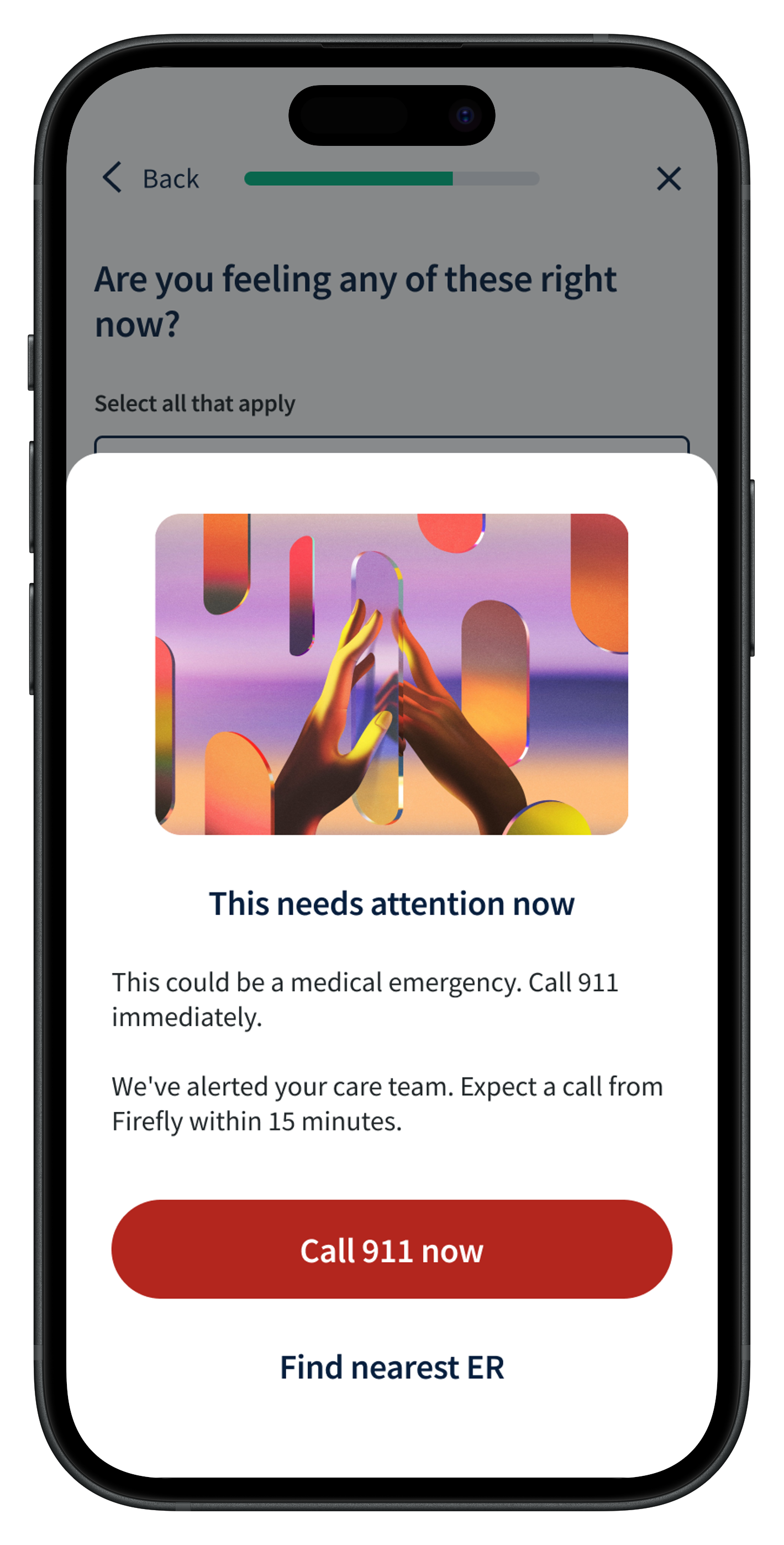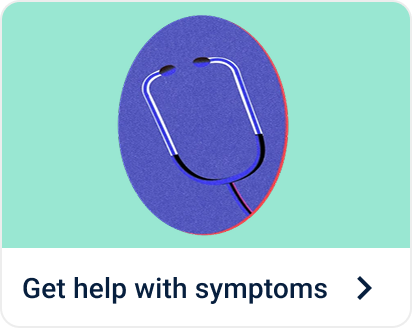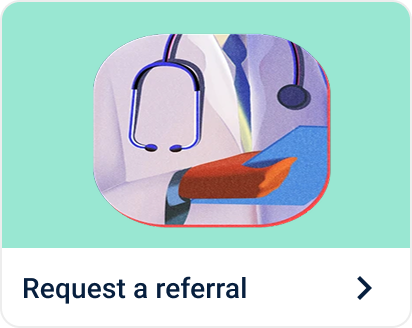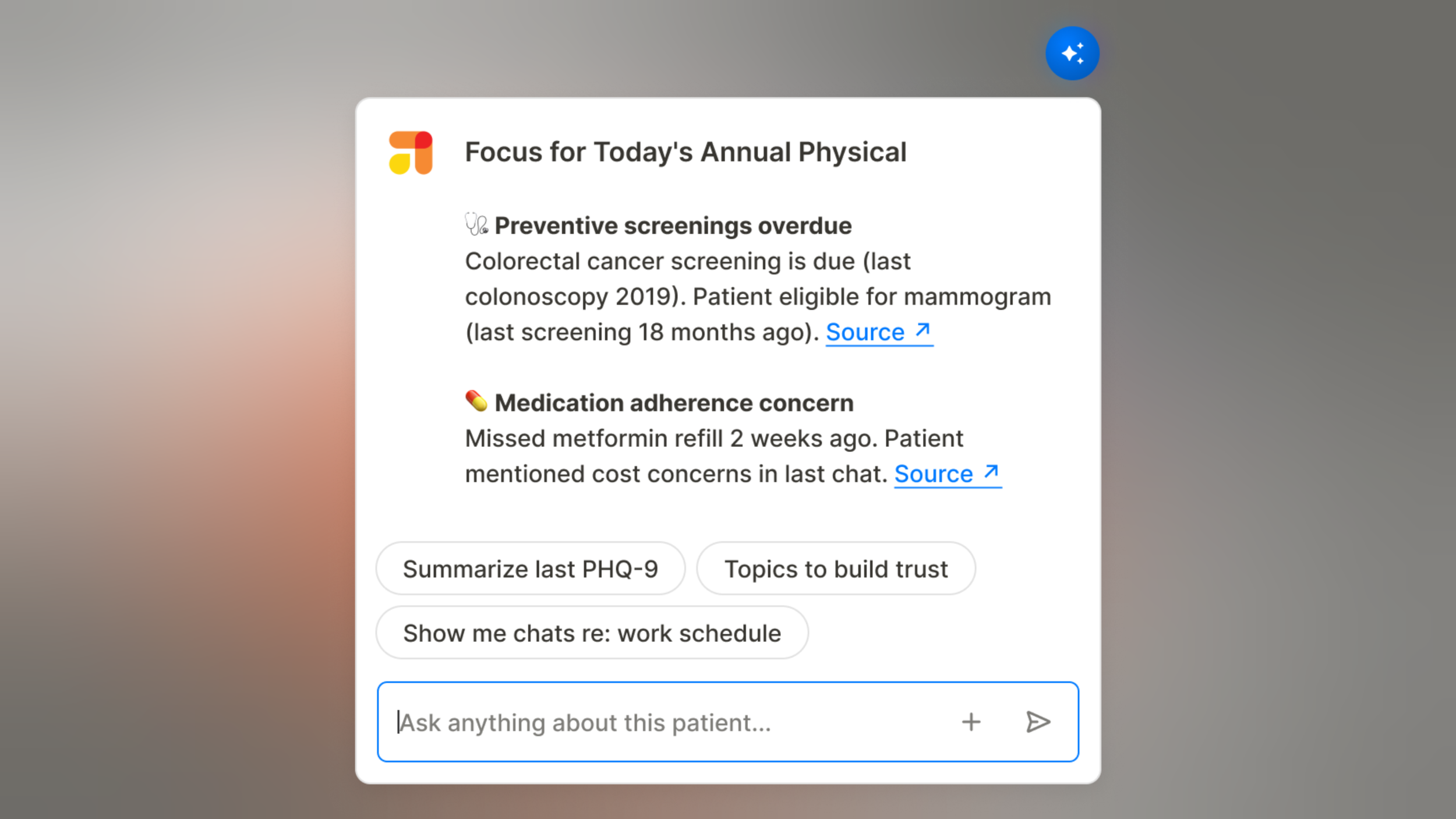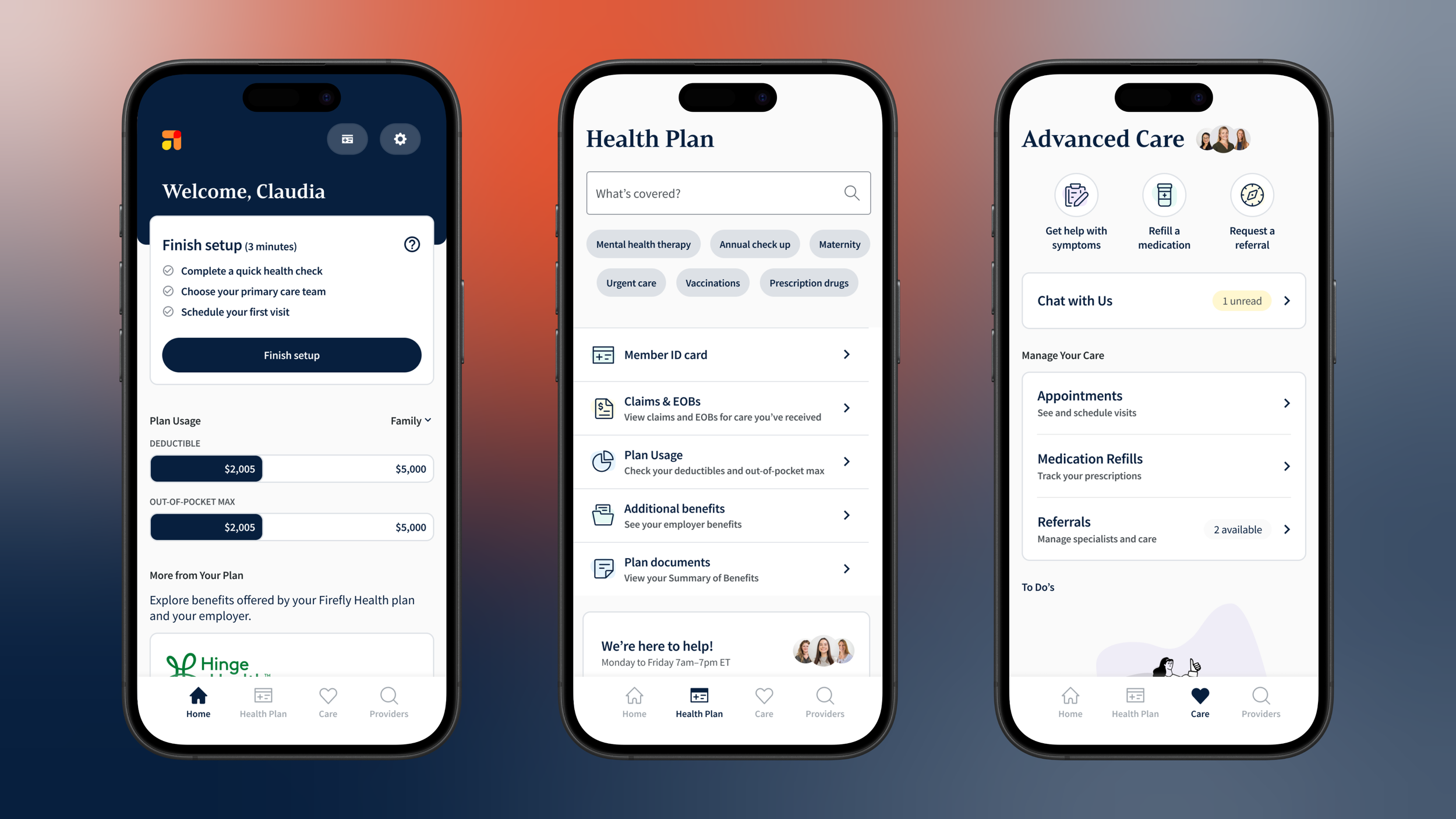CASE STUDY / FIREFLY HEALTHAI Self-Service for Members
Timeline: Q1, 2025
Challenge: Design self-service AI tools that reduce operational costs while improving member experience for routine healthcare tasks
“Quick Links” were added to the app home screen for the most routine and automate-able member needs. Each quick link launches a simple, AI-based questionnaire or workflow.
The insight
In early 2024, I identified a significant business opportunity: many routine member requests were consuming expensive clinical resources when members would actually prefer handling these tasks through automated tools. After presenting a formal business case to the leadership team, the project received a green light and roadmap prioritization for its ROI potential.
Before: A routine request (e.g. med refill request) could take an hour or more to resolve
Phase 1
Research & Discovery
I conducted analysis to validate my hypothesis and identify which routine tasks offered the highest impact opportunities for automation.
Critical insights:
Hidden operational costs: Routine requests like prescription refills required multiple clinical touchpoints, consuming expensive RN and NP time
Member frustration with async delays: What leadership perceived as "convenient chat" was actually creating friction for simple tasks that members expected to complete immediately
High-volume, low-complexity patterns: Prescription refills and basic symptom inquiries represented a disproportionate amount of routine clinical interactions
ROI opportunity: Automating top routine tasks could redirect clinical resources to complex care while improving member satisfaction
Technical feasibility: Existing clinical protocols could be translated into guided self-service flows without compromising care quality
Illustrative concept from initial business case presentation
Phase 2
Design
Based on research insights, I developed a phased self-service strategy that would deliver immediate ROI while establishing patterns for future automation.
Key design decisions:
Prescription refill automation with smart routing based on medication type, refill history, and clinical flags
Symptom checker with guided triage helping members understand next steps while capturing clinical context
Contextual escalation points throughout flows to clinical team when complexity increases
Progress tracking and status updates keeping members informed during automated processes
Phased rollout strategy:
Phase 1: RX Refills MVP
Phase 2: New Symptom Checker alongside Rx Refills improvements
Phase 3: Provider Search and Care Navigation (complex but meaningful strategic value)
User Flow: Get help with symptoms
User Flow: Refill a medication
User flow: Request a referral
User flow: Status tracking
Phase 3
Validation & Testing
Before population-wide rollout, I conducted extensive validation through usertesting.com and A/B testing to ensure self-service tools would meet member needs, safety requirements, and existing clinical workflows.
Key findings:
Prescription refill automation tested very well - member adoption was fast and operational efficiency jumped
Clinical escalation points worked seamlessly when triggered by smart routing algorithms
Staff workflow improvements emerged as clinical team could focus on complex cases rather than routine requests
Refinements made:
Refined symptom checker through multiple iterations to balance clinical thoroughness with user experience simplicity
Enhanced status tracking and notifications after users expressed anxiety about lack of system feedback
Learning & Iteration
Designing for “Red Flag” moments
What we missed:
First version focused on the happy path. We hadn't designed for "red flag" symptoms.
What clinicians flagged:
Inputs like ‘chest pain’ or ‘heart palpitations’ shouldn't just route to self-service options—they need immediate escalation.
What we added:
Triggers that bypass automation and surface emergency guidance and notify on-call staff to begin outreach protocols.
Learning & Iteration
Recognizing Intent
What we noticed:
Most members adopted the new flows quickly but some still went straight to chat out of habit.
The opportunity:
Instead of forcing behavior change, meet them where they are—and test something we'd been wanting to try.
What we added:
Intent recognition that catches common requests and redirects to self-service.
70%
of refill requests automated
3x
reduction in clinical touchpoints for Rx
5x
reduction in clinical touchpoints for new symptoms
Business insight drives design strategy
Identifying operational inefficiencies created a compelling business case that secured leadership buy-in and resources. By framing self-service as both cost savings and member experience improvement, design became a strategic business driver rather than just interface optimization.
Member preferences can evolve faster than business assumptions
What leadership perceived as "convenient chat" was actually creating friction for routine tasks. Regularly challenging internal assumptions about member preferences through research prevents well-intentioned features from becoming user frustrations.
Key project insights
Phased rollout enables learning and refinement
Launching prescription refills first provided immediate ROI and validated our approach, while the more complex symptom checker benefited from lessons learned. Sequential releases allowed us to refine patterns and build confidence before tackling higher-risk automation.
Clinical safety and efficiency can coexist
Automated self-service doesn't compromise care quality when properly designed with clinical input and smart escalation triggers. The key is transparent handoffs between automated and human assistance that maintain care continuity.
Case Studies
AI Patient Summary
Designed an embedded AI tool that cut clinician visit prep time by 67% — from 15+ minutes to under 5 — while maintaining the clinical context and safety providers needed to trust it.
Designing a Scalable Product Foundation
Built a member app and provider CRM from scratch for an early-stage startup, creating a product foundation that scaled from 5 employees to enterprise health plan.
App Rearchitecture & Brand Refresh
Rearchitected Firefly's core mobile app to improve user experience, reduce technical debt, and support rapid feature development as we scaled to enterprise clients.
Signup & Onboarding Redesign
Redesigned signup flow and onboarding process, increasing completion by 23% and first appointment scheduling by 15% while supporting three distinct member types.
Customer Health Monitoring
Created systematic customer intelligence program that transformed overlooked satisfaction trends into company-wide accountability, preventing cx crisis during major business pivot.
